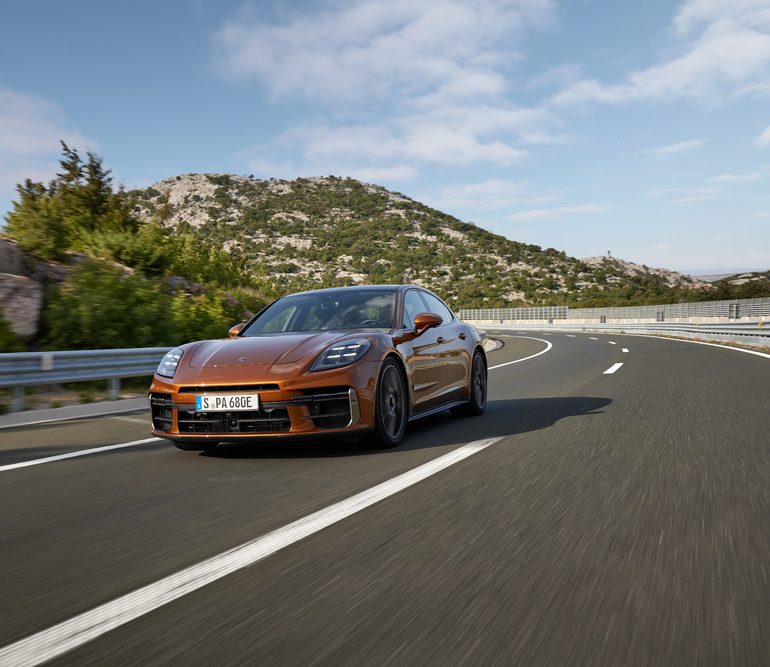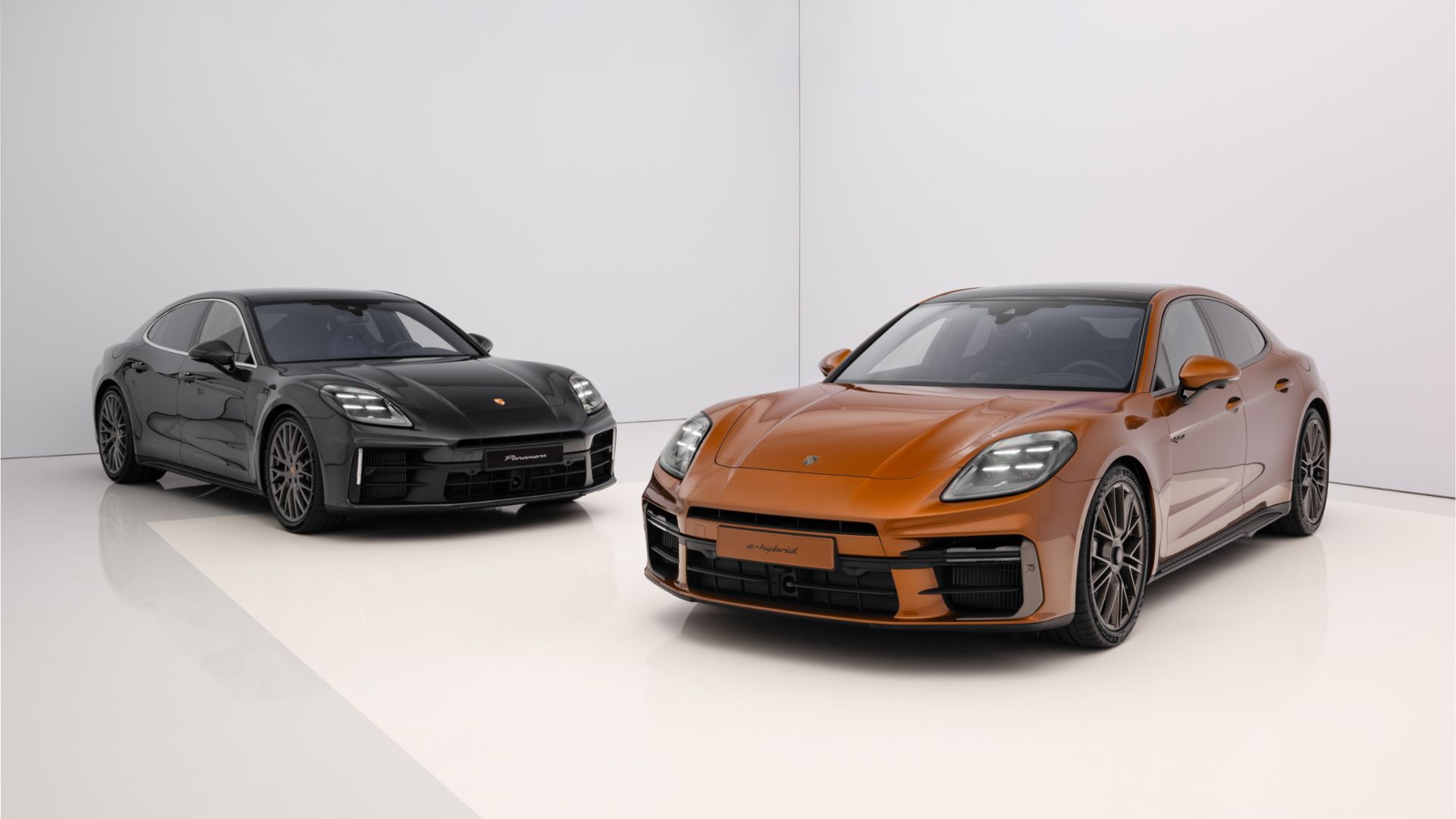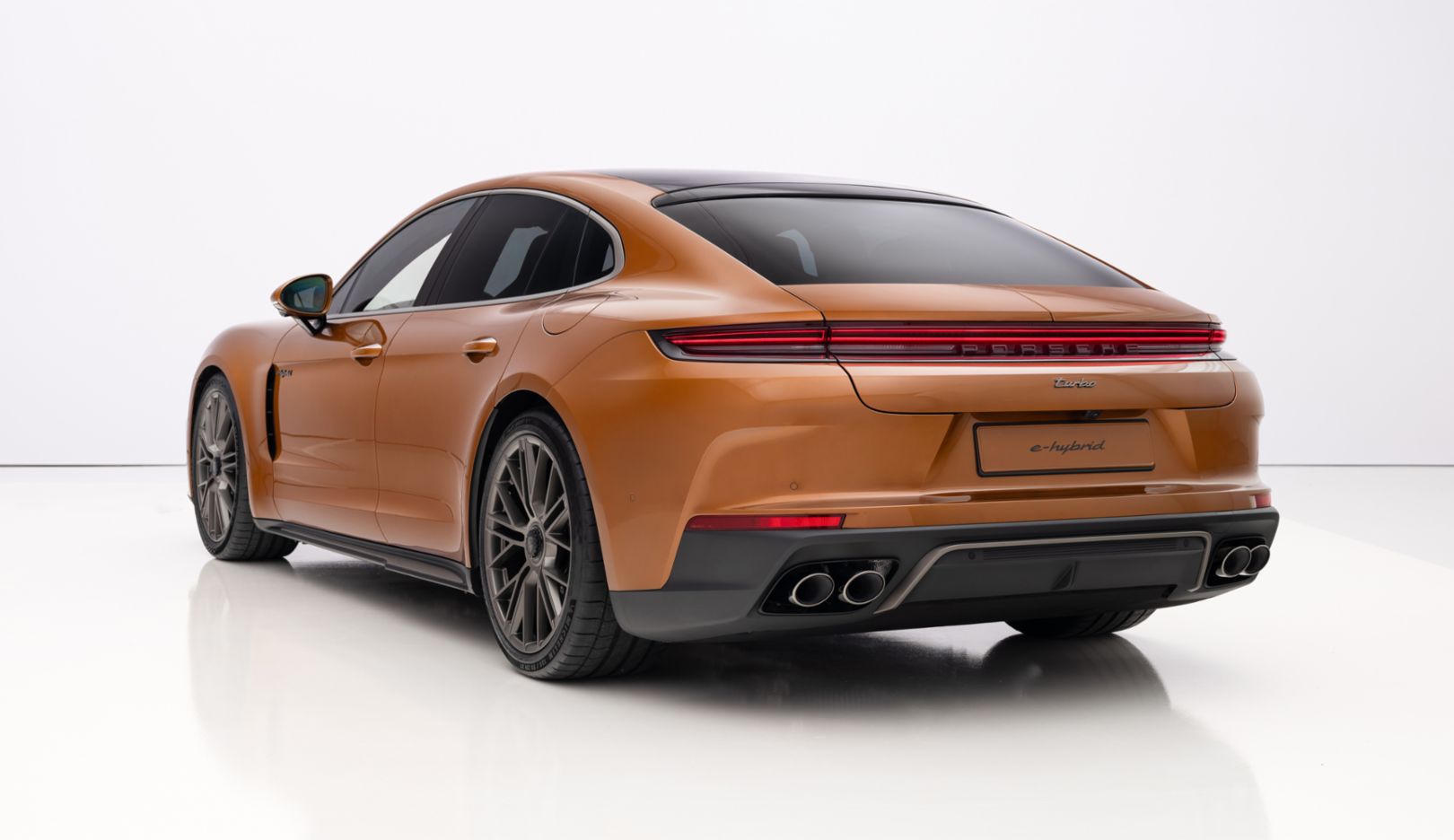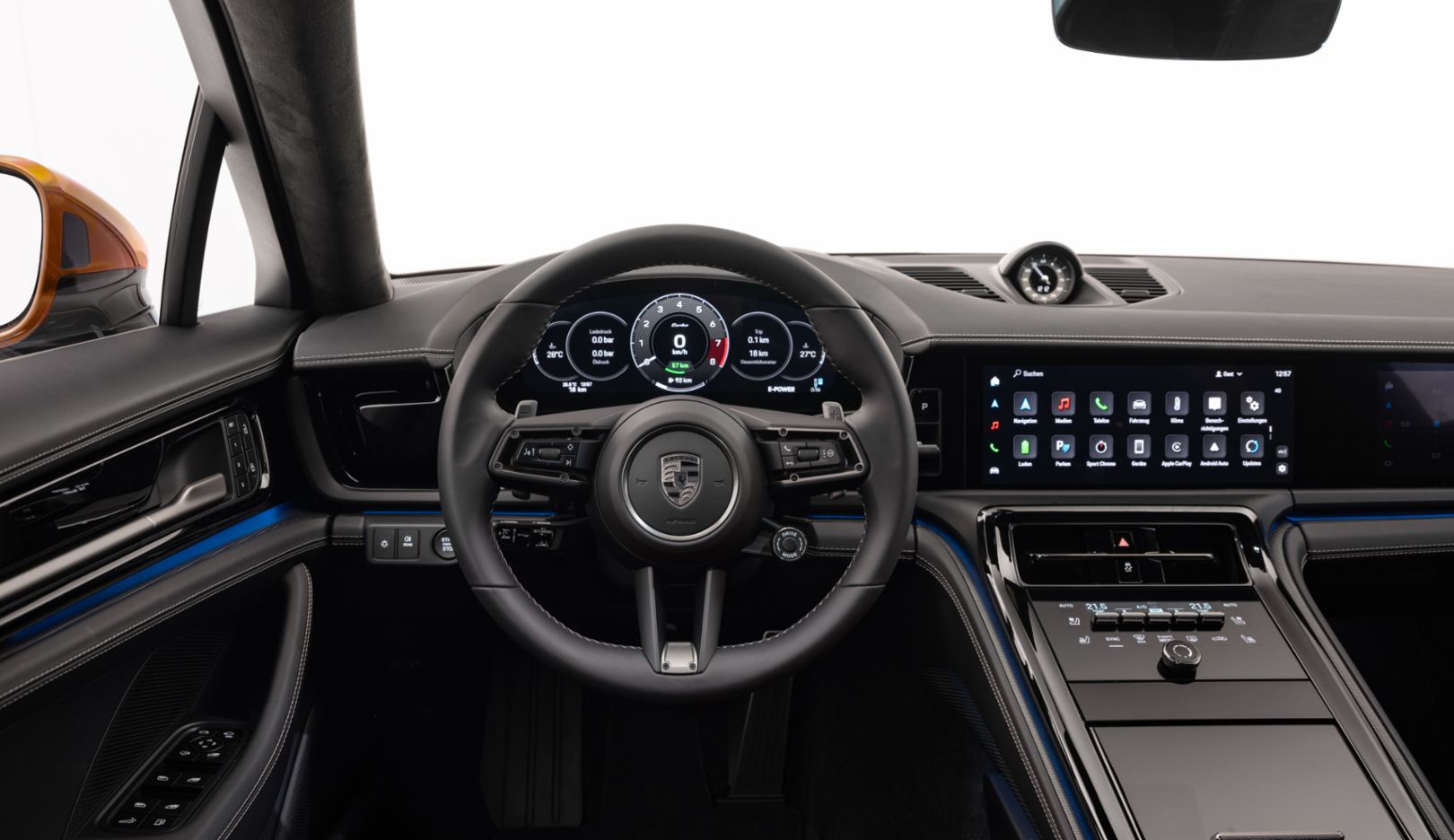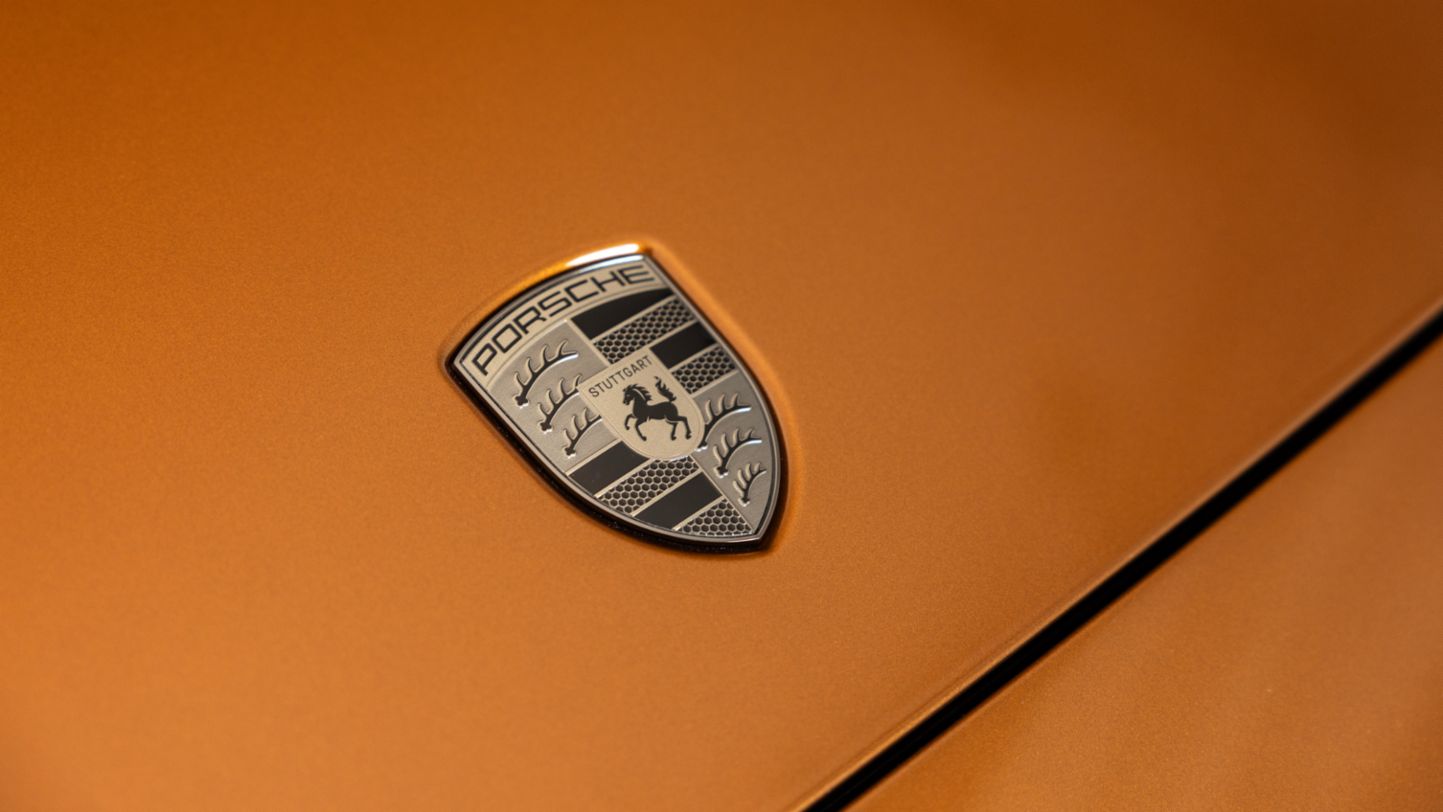While the Porsche Taycan has undoubtedly taken center stage when it comes to articulating the company’s future vision, you’d be forgiven for assuming that the aging Porsche Panamera—now in its 15th year, over 2 generations—and its continued existence would become a binary decision at this point. There wouldn’t be much up for debate. Either scrap it entirely, or remake it into something remarkably different from any version before it. Interestingly, Porsche have taken neither approach and have embarked on a more nuanced and perhaps, unexpected path.
A Compelling Case For More
Many see the Panamera and Taycan as being somewhat synonymous—drivetrains aside—and there’s no doubt that the average person would have a hard time distinguishing between the two platforms at a cursory glance. Both have been offered in very similar sedan and Sport Turismo body styles, with each car in those respective profiles offering roughly the same level of utilitarianism. So, aside from the decision of going EV, or sticking with a more conventional combustion engine (with the option of a hybrid), there isn’t much separating the two models, granted the aforementioned difference is a colossal one.
This sentiment is not about to be changing in any drastic way, though Porsche has gone on record to state that this second (technically, third) wind for the Panamera is propped up by the company’s flagship 911 sports car. No, there’s not going to be anything crazy going on—like dropping a GT3 engine into any of the upcoming models—nor will there necessarily be any direct mechanical relationship with the company’s quintessential poster boy. Nevertheless, when speaking about the incoming gen’s improvements to driving dynamics, Porsche enthusiasts should have plenty to be excited about.
The Argument For Revamped Driving Dynamics
In this regard, the German automaker claims that the Panamera will now feel much more like a 911 to drive. While such claims, both past and present, have been made to varying degrees about any Porsche model that isn’t a 911 in the name of marketing, it looks like there’s a pretty strong case for that statement to ring true in the case of the new Porsche Panamera.
At the current moment, it looks like most of this transformation has been achieved by overhauling the outgoing model’s suspension system. PASM—a staple in all modern 911 cars—is now standard in all Panamera trims, granting the sedan (and eventual Sport Turismo) models an active damper setup that will indeed offer an experience much more inline with the brand’s most sporty models.
Crafted specifically to debut on the upcoming Panamera is the automaker’s newly designed Porsche Active Ride suspension technology, which utilizes electronically controlled hydraulic motors which can manipulate the car’s pitch, yaw and roll in a way that optimizes both performance and comfort in any situation. If there’s any “flex” that the Panamera has over other models, this would be it, and is arguably the biggest proponent for putting your name down for one. Other optional features such as rear-axle steering further improve the car’s maneuverability, particularly in tight spaces.
NEWS: With the new 2024 Porsche Panamera, the company unveiled a hydraulic suspension called Porsche Active Ride.
It has active shock absorbers powered by an electrically-operated hydraulic pump. Porsche claims it’s so powerful that the new Panamera doesn't need springs to… pic.twitter.com/9i3ErH1eP1
— Sawyer Merritt (@SawyerMerritt) November 26, 2023
Smaller Tweaks Elsewhere
In terms of powertrain options, the new Panamera will share more in common with the latest Porsche Cayenne SUVs than with the 911. Standard on the fully-ICE base trims, will be a familiar 2.9L twin-turbocharged V6 that now produces 348 hp and 368 lb-ft of torque. On the bare bones rear-wheel drive Panamera, a 0-60 mph run in 5.0 seconds is possible while in the all-wheel drive Panamera 4, a quicker launch improves that time to 4.7 seconds.
Power Overwhelming
Of course, it’s the E-Hybrid trims that are really meant to steal the show here. The exclusively all-wheel drive models sport a revised 4.0L twin-turbocharged V8, a beefed-up 8-speed PDK transmission and a more sophisticated electric motor that now adds an additional 187 hp for the Turbo E-Hybrid, which produces a combined total of 670 hp and 685 lb-ft of torque. The latter is the first of four E-Hybrid models to arrive, with a 729 hp Turbo S E-Hybrid variant expected to follow after the initial release. The range-topping models will no doubt be completing the 0-60 mph sprint in the low-3-second range, making them quite blistering really.
Day-to-Day Considerations
On the greener spectrum of performance credentials, the new Panamera E-Hybrid models also boast additional electric range, with the Turbo variant able to travel up to 56 miles on battery power alone thanks to its larger 25.9 kWh battery. Additionally, a new 11 kW onboard charger quickens the juice-up process thanks to more advanced plug-in architecture.
If you’ve ever sat inside a Taycan or one of the brand new Cayennes, you’ll notice a familiar theme inside the cabin when it comes to the upcoming Panamera. With the EV’s interior design blueprint already being fully amalgamated into the Cayenne, upcoming models are expected to follow suit, as was always intended by Porsche. This means that across the board, the Porsche line-up will share many of the same design cues and tech amenities—not a bad thing, as this will bring about some uniformity when it comes to the total Porsche experience.
Pricing & Availability
Right now, only pricing information for the base Panamera and the Panamera 4 have been revealed, with each car starting at $101,550 USD and $108,550 USD respectively. Orders are currently being accepted and first deliveries are expected to arrive by spring of next year. No specifics just yet on the Turbo E-Hybrid (or any subsequent hybrid models), though it’s a given that it will exceed the outgoing Turbo E-Hybrid’s starting price of $197,850 USD. Porsche will provide more details as we approach the official on-sale date.


